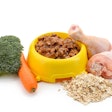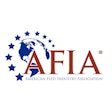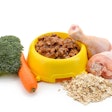The events surrounding the contamination of petfoods and subsequent animal deaths in spring 2007 have focused public attention on how these products are regulated in the US. Clearly, the bulk of the regulatory activity in 2007 focused on manufacturing and ingredient safety rather than labeling matters, a pattern likely to be continued this year. While most of these projects were in the works prior to the massive recall, they are timely in regard to the situation.
FDA addresses gap
The US Food and Drug Administration (FDA) has been working for the past five years on its Animal Feed Safety System (AFSS), described as a comprehensive, risked-based approach to helping ensure the safety of animal feeds and petfoods to protect animal and public health (www.fda.gov/cvm/afss.htm). I have discussed aspects of AFSS in past "Petfood Insights" columns (see November 2006 and August 2007).
In its AFSS draft framework document, FDA has identified a number of gaps in protection under current feed safety programs. Recently, a major step has been taken to address at least one of these gaps: namely, the inability of FDA to formally recognize a list of acceptable feed ingredients beyond its relatively short compilation of codified food additives and GRAS (generally recognized as safe) substances.
A memorandum of understanding between FDA and the Association of American Feed Control Officials (AAFCO) gives FDA more direct control of the AAFCO Feed Ingredient Definition process (see www.fda.gov/ohrms/dockets/98fr/fda225-07-7001-mou0001.pdf). This means FDA has the final say on most animal feed and petfood ingredient issues, which reportedly will allow the agency to formally recognize the AAFCO list and take enforcement actions against products containing non-compliant ingredients on that basis. (For an in-depth report, see my January 2008 column.)
Response to recalls
In response to last year's recalls, the US Congress enacted the Food and Drug Administration Amendments Act of 2007 (FDAAA). Only a small part of the act deals with petfood issues, and the bulk of that pertains to safety (see www.fda.gov/oc/initiatives/hr3580.pdf).
The new law requires FDA to improve its capabilities in dealing with a contamination incident, including how it cooperates with state regulators and how it communicates details of the incident to the public. The petfood industry also bears increased responsibility: Under the new law, companies will have to be part of a reportable food registry, in which they must rapidly investigate and report to FDA on contamination incidents stemming from their facilities.
FDAAA also requires FDA to consult with AAFCO and other stakeholders to develop new ingredient, processing and labeling standards for petfoods. Historically, federal regulations have covered only basic labeling requirements, with many aspects (nutritional adequacy, nutrient content) left to AAFCO and state regulatory agencies. This may change, but it will take some time (FDA has until September 2009 to comply with the law).
With respect to ingredient standards, perhaps the memorandum of understanding between FDA and AAFCO regarding the Feed Ingredient Definition process will be sufficient. Regarding processing standards, establishment of federal good manufacturing practicesfor all feeds and petfoods, not just medicated feeds and low-acid canned foodsmay be on the horizon. (For more information on FDAAA, see my December 2007 column.)
AAFCO weighs in
Within AAFCO, most of the activity concerning petfood takes place within the Pet Food Committee. Perhaps the most controversial labeling issue currently before the committee is the proposed changes to PF9, which would require, among other things, mandatory calorie content statements on all dog and cat food labels.
On behalf of the American College of Veterinary Nutrition, I submitted the proposal in 2005, and it has generated lively discussion over the past few committee meetings. At press time, the committee is awaiting a consensus recommendation from the Calorie Statement Working Group (comprised of three regulators and three non-voting advisors, including me) before taking further action.
Other items of consequence before the Pet Food Committee deal with labeling education rather than changes to the labeling regulations themselves. The committee has recently drafted an update to its AAFCO Pet Food and Specialty Pet Food Labeling Guide , which should be released soon (check www.aafco.org). This publication, sold separately from the AAFCO Official Publication , helps explain and interpret the Model Pet Food and Specialty Pet Food Regulations for both regulators and the industry. The committee is also planning a Pet Food Regulatory Workshop to be held in conjunction with the AAFCO annual meeting this August.
Finally, the Pet Food Committee has charged an expert panel with revising the AAFCO Dog and Cat Food Nutrient Profiles and feeding trial protocols to reflect new information, particularly from the National Research Council's 2006 publication Nutrient Requirements of Dogs and Cats . While the panel has not announced any significant progress to date, hopefully it will make some recommendations this year.
More updates from AAFCO committees
Other committees have also addressed petfood matters:
- After many years of discussion with the Pet Food Committee, the Model Bill & Regulations Committee (MBRC) has finally approved and forwarded Policy Statement 29. This would allow for educational label statements on nutrient content of ingredients without prompting the need for supporting guarantees. It will soon be voted on by the AAFCO board of directors and membership.
- The MBRC has also recently revised the net quantity statement regulations to better reflect the requirements under the Fair Packaging and Labeling Act.
- The MBRC's primary focus of late has been on safety issuessuch as drafting of the Non-Commercial Model Billand "housecleaning" matters, such as gender neutralization of the Model Bill.
- The Feed Labeling Committee is making progress on allowing for carbohydrate-related label claims, including acceptance of new definitions for certain listed ingredients: starch, sugars and fructans. This action should eventually allow for claims such as "less " and "low ."
- The Feed Manufacturing Committee has finished its work on the AAFCO Model Good Manufacturing Regulations for Feed and Feed Ingredients. It now goes to the MBRC for further deliberation. If passed, this initiative will allow regulators increased ability to look at process control in determining potential adulteration versus just looking at the final product for evidence of adulteration.
Redefining wheat gluten and rice protein?
Finally, the Ingredient Definitions Committee will be discussing common petfood ingredients such as wheat gluten and rice protein concentrate. Neither is presently defined by AAFCO, but rather derived from a combination of a common or usual name and AAFCO-defined feed terms. Since both ingredients were implicated in last year's recalls, the prudence of allowing this type of constructed name is being questioned.














